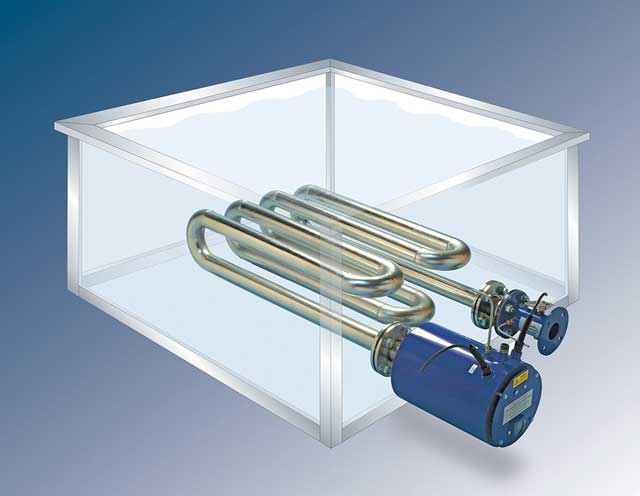
Correct specification of process heating equipment is central to efficient performance, but it can also have a direct impact on maintenance. Jeff Foster, sales and marketing director at Lanemark Combustion Engineering, sets out the key considerations.
Whether a facility is focused on providing air, liquid or space heating, the selection of the optimum heat source is the first issue that needs to be addressed. Both natural gas and propane sources can be used in sectors from surface preparation and finishing to rotational moulding and food processing.
Though the choice of process air heating or air handling unit burner is central to an operation – ratings typically range in output from 9 kW to 2100 kW – tank heating installations (using Lanemark’s TX series) call for the ideal combination of system elements to be assessed and selected.
Liquid heating applications comprise a burner firing into a multi-pass immersed tube heat exchanger that passes through the tank wall, with an exhaust fan pulling the products of combustion through the system. The highest level of heating efficiency, often linked to minimising losses, should always be targeted. We believe that over 80% is readily achievable in the majority of installations.
To optimise the selection of system components, Lanemark developed the TXcalc software program. This not only helps to maximise the efficiency of process operations, but it can also enhance maintenance procedures because it helps to ensure that correctly specified system components operate reliably within predicted performance limits.
A typical TXcalc calculation starts with the input of basic operational details. These include tank dimensions and ambient location, liquid density and depth, and anticipated heat losses – perhaps through tank walls or via an uncovered top. Features such as warm-up timescales and operating temperature range are then added to enable the ideal combination of burner, heat exchanger and exhaust fan to be identified and matched to achieve the target efficiency.
The process is directly applicable for the vast majority of process tank heating operations, including dip or immersion facilities as well as spray tank vessels. In the last case, the required pump flow rate and anticipated return temperature of the sprayed liquid is also incorporated into the analysis.
With installation complete, efficient maintenance becomes central to operations. Lanemark BurnerCare was created to address this need, with services that range from installation and commissioning to the provision of technical support, spares and consumables, and a choice of service agreements. Both planned and ad hoc maintenance needs can be fully accommodated.
The specification and performance of all process burner facilities is one of the most important elements in many processing and manufacturing operations. We believe that whatever the chosen solution, it is vital that the process operational needs are matched as accurately as possible to system components and capabilities. The initial performance levels that are evident at the time of installation can then be maintained into the long term.
Further information: Jeff Foster | Tel : (024) 7635 2000
Email : info@lanemark.com | Website : www.lanemark.com

